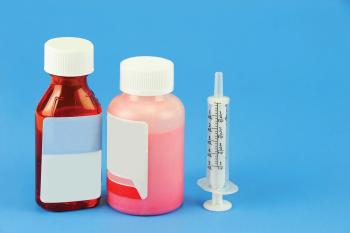
PTSM: Pharmaceutical Technology Sourcing and Management
- PTSM: Pharmaceutical Technology Sourcing and Management-08-01-2012
- Volume 8
- Issue 8
Drug Delivery Insights: Nanotechnology and Microspheres
Nanolipogels for anticancer drug delivery, inhalable and thermo-responsive, fat-encased nanoparticles for targeted drug delivery, and calcium carbonate microspheres are some recent developments.
Targeted drug delivery is particularly important in the delivery of anticancer therapies to lower dosing, reduce side effects, maximize delivery of the drug substance to tumor sites. Recent research in nanolipogels and thermo-responsive lipid-based encapuslation help to advance approaches in this field. Also, a fabrication strategy for calcium carbonate microspheres also represents another interesting advance in the drug-delivery arena.
Nanolipogels as drug-delivery vehicles
Researchers at Yale University recently developed nanolipogels as a new drug transport technology to deliver anticancer therapies. The nanolipogels are nanoscale, hollow, biodegradable spheres, which are capable of holding chemically diverse molecules, according to a July 15, 2012, press release by the National Science Foundation (NSF), which is providing funding for the research. The nanolipogels contained transforming growth factor (TGF-β) and interleukin-2 (IL-2).
"You can think of the tumor and its microenvironment as a castle and a moat," said Tarek Fahmy, the Yale University engineering professor and co-author of a recent paper detailing the research, in the NSF press release (1). "The 'castles' are cancerous tumors, which have evolved a highly intelligent structure—the tumor cells and vasculature. The 'moat' is the cancer's defense system, which includes TGF-β. Our strategy is to 'dry-up' that moat by neutralizing the TGF-β. We do that using the inhibitor that is released from the nanolipogels. The inhibitor effectively stops the tumor's ability to stunt an immune response."
Specifically, the researchers developed nanoscale liposomal polymeric gels (i.e., nanolipogels) of drug-complexed cyclodextrins and cytokine-encapsulating biodegradable polymers to deliver small hydrophobic molecular inhibitors and water-soluble protein cytokines. The nanolipogel releasing TGF-β inhibitor and IL-2 significantly delayed tumor growth, increased survival of tumor-bearing mice, and increased the activity of natural killer cells and of intratumoral-activated CD8+ T-cell infiltration (1).
"The cytokine can be thought of as a way to get reinforcements to cross the dry moat into the castle and signal for more forces to come in," said Fahmy in the NSF release. “In this case, the reinforcements are T-cells, the body's anti-invader 'army.' By accomplishing both treatment goals at once, the body has a greater chance to defeat the cancer,” he said.
An important aspect of the nanolipogels is their ability to “package” two completely different kinds of molecules—large, water-soluble proteins, such as IL-2, and smaller water-phobic molecules, such as the TGF-β inhibitor—into a single delivery vehicle, according to the NSF release. The outer shell of each nanolipogel is made from an biodegradable, synthetic lipid that degrades in a controlled manner, can encapsulate a drug-scaffolding complex, and is easy to form into a spherical shell. Each shell surrounds a matrix made from biocompatible, biodegradable polymers that are impregnated with the TGF-β inhibitor molecules. Those near-complete spheres are put in a solution containing IL-2, which gets entrapped within the scaffolding, a process called remote loading, according to the NSF release. The result is a nanoscale drug-delivery vehicle that is small enough to travel through the bloodstream but large enough to be entrapped for delivery to the tumor sites.
Inhalable and thermo-responsive, fat-encased nanoparticles
Researchers at the University of Sydney in Australia have developed inhalable and thermo-responsive, fat-encased nanoparticles as a possible treatment for lung cancer. The team designed inhalable, targetable particles that can attack tumors but leave healthy cells undamaged, reducing the side effects of cancer treatment, according to a July 27, 2012, University of Sydney press release. The particles consist of a drug encased in a lipid that can be activated using a magnetic field. The researchers incorporated budesonide and superparamagnetic iron-oxide nanoparticles (SPIONs) into lipid particles using oil-in-water emulsification (2). Particle size, chemical composition, responsiveness to magnetic field, thermosensitiveness, and inhalation performance in vitro were investigated (2).
"When exposed to a magnetic field, the encased superparamagnetic nanoparticles vibrate, melting the fat, and releasing the drug," said research leader Wojciech Chrzanowski and lecturer in pharmaceutics at the University of Sydney, in the press release. "The system we have developed addresses one of the most important problems related to the side effects of cancer-drug therapies, such as undesired interactions with healthy tissues. Since the drug is hidden in a lipid structure until it reaches the target site, the healthy cells are protected," he said. "We are able to trigger the drug release because our formulation is thermo-sensitive. External stimulus, in our case the electromagnetic field, induces the increase in local temperature within the particles, which activates the drug release. Under the microscope, the external electromagnetic field appears to shake the super paramagnetic nanoparticles in the formulation, producing heat that then breaks open the particles, releasing the drug at the tumor site. Because the formulation includes superparamagnetic particles, we are also able to guide the particles to specific sites using magnets,” he explained.
The researchers found that particles of average diameter 2–4 μm with budesonide and SPIONs inside the lipid matrix responded to a magnetic field with 100% extraction at a distance of 5 mm. Formulations were shown to have accelerated rate of drug release at hyperthermic temperatures (45 °C)–controlled release. The produced inhalation dry powder had an inhalable fine particle fraction of 30%. The lipid system had thermo-sensitive characteristics, suitable for controlled delivery, and the model drug and SPION-loaded lipid system was magnetically active and movable using simple permanent magnets. Overall, the system was shown to have application as a targeted and controlled inhalation therapy (2).
The research holds potential not only for inhalable formulations, but also for other drug-delivery applications. "Our system holds great potential not only as an inhalable formulation but for a wide range of applications where targeting and externally stimulating or triggering drug release is critical,” said University of Sydney Associate Professor Paul Young and recently appointed head of respiratory technology at the Woolcock Institute of Medical Research, in the release. "The important feature of the system is its ability to 'exploit' the temperature sensitivity of the formulation, so the drug release can be achieved at different temperatures. This is particularly important for multidrug delivery where different active compounds could be released at different times."
Calcium carbonate microspheres
Helmuth Möhwald and his team from the Max Planck Institute of Colloids and Interfaces in Golm, Potsdam, Germany, have developed a technique for producing microspheres for targeted drug delivery. The researchers used porous calcium carbonate microspheres as templates for the production of hollow three-dimensional balls, according to a July 2, 2012, Max Planck Institute press release. Specifically, the researchers showed that three-dimensional hybrid colloidal spheres with integrated functions and collective properties can be fabricated using common inorganic nano-objects as building blocks with polyelectrolyte encapsulation through a simple template strategy, which further opens up the fabrication strategy as an approach for developing hybrid materials with multiple functions and collective properties (3).
The researchers used calcium carbonate microsphere and filled the pores of the calcium carbonate spheres with nanoparticles, surrounded the filled calcium carbonate spheres with a web of long protein chains or polymer threads, and then dissolved the calcium carbonate template using acid. The nanoparticles arranged themselves into a porous sphere that was encased in the protein web, according to the release. “We can very easily combine substances to form a multifunctional unit and tailor their chemical and physical properties to the required function,” said Möhwald in the release. The protein web not only covers the hollow sphere, but also is biocompatible and can contain biochemical signalling substances that send the spheres directly to their target in the body.
References
1. T. Fahmy et al., “Combination Delivery of TGF-β inhibitor and IL-2 by Nanoscale Liposomal Polymeric Gels Enhances Tumor Immunotherapy,” Nature Materials, online, DOI:10.1038/nmat3355, July 15, 2012.
2. W. Chrzanowski et al., “Magnetized Thermo Responsive Lipid Vehicles for Targeted and Controlled Lung Drug Delivery,” Pharm. Res., online, DOI: 10.1007/s11095-012-0774-9, May 15, 2012.
3. X. Yan, J. Li, and H. Möhwald, “Templating Assembly of Multifunctional Hybrid Colloidal Spheres,” Advanced Materials, online, DOI: 10.1002/adma.201200408, Apr. 23, 2012.
Articles in this issue
over 13 years ago
CSR and Sustainability in the Newsover 13 years ago
The Future of Drug Delivery: Wireless Microchip-Based Drug Deliveryover 13 years ago
Reflecting on 35 Years of Procurement Transformationover 13 years ago
A Tale of Two Markets for Global Pharmaceutical Salesover 13 years ago
Abbott Pledges Support for Program to Aid Women and Girls in BurmaNewsletter
Get the essential updates shaping the future of pharma manufacturing and compliance—subscribe today to Pharmaceutical Technology and never miss a breakthrough.




